There are no secrets in consumer electronics anymore. Sometimes it’s the fault of flubs and flaws and leakers. Sometimes it’s by design. In the case of the Galaxy Note 9, it’s a little bit of both.
The Galaxy S9 wasn’t the blockbuster Samsung’s shareholders were expecting, so the company understandably primed the pump through a combination of teasers and leaks — some no doubt unintentional and others that seemed suspiciously less so.
By the time yesterday’s big event at Brooklyn’s house that Jay-Z built rolled around, we knew just about everything we needed to know about the upcoming handset, and virtually every leaked spec proved accurate. Sure, the company amazingly managed to through in a surprise or two, but the event was all about the Note.
And understandably so. The phablet, along with the Galaxy S line, forms the cornerstone of Samsung’s entire consumer approach. It’s a portfolio that expands with each event, to include wearables, productivity, the smart home, automotive, a smart assistant and now the long-awaited smart speaker. None of which would make a lick of sense without the handsets.
If the Galaxy S is Samsung’s tentpole device, the Note represents what the company has deemed its “innovation brand,” the uber-premium device that allows the company to push the limits of its mobile hardware. In past generations, that’s meant the Edge display (curving screen), S-Pen, giant screen and dual-camera. That innovation, naturally, comes at a price.
Here it’s $1,000. It’s a price that, until a year ago seemed impossibly steep for a smartphone. For the Galaxy Note 9, on the other hand, that’s just where things start. Any hopes that the new model might represent a move toward the mainstream for the line in the wake of an underwhelming S9 performance can be put to rest here.
The Note is what it’s always been and will likely always continue to be: a device for the diehard. A very good device, mind, but one for those with an arm and or a leg to spare. Most of the good new features will trickle their way down the food chain to the company’s more mainstream device. At $720/$840, the S9 isn’t a budget phone by any stretch of the imagination, but at the very least, keeping it to three digits seems a little more palatable.
A good rule of thumb for a hardware review is incorporating the product into one’s own life as much as possible. It’s a pretty easy ask with a device like the Note 9, which has the advantage of great hardware and software design built upon the learnings and missteps of several generations.
It’s still not perfect by any means, and the company’s everything-and-the-kitchen-sink approach to the line means there are plenty of features that never really made their may into my routine. And while, as the largely unchanged product design suggests — the Note 9 doesn’t represent a hugely significant milestone in the product line — there are enough tweaks throughout the product to maintain its place toward the top of the Android heap.
All charged up
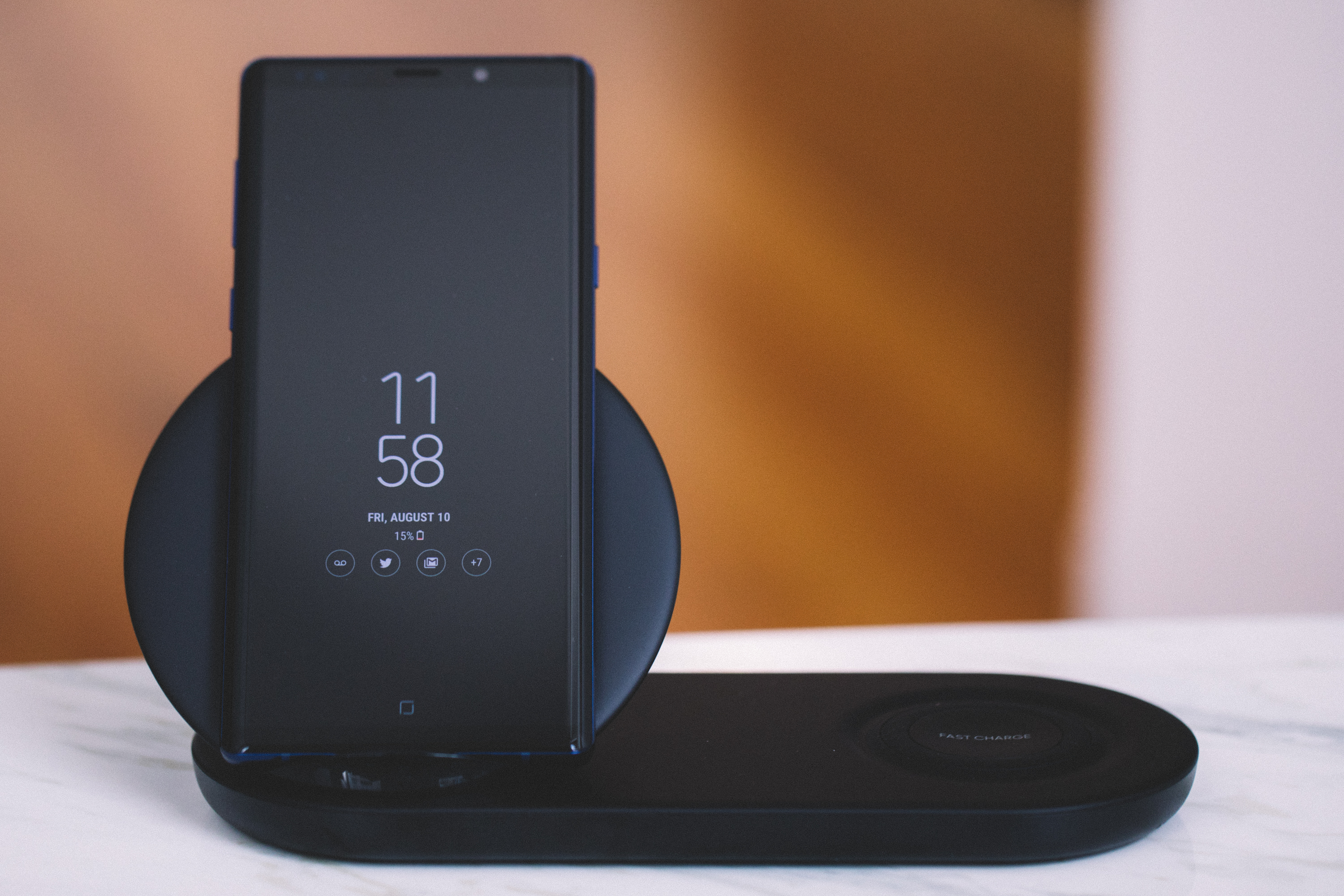
Let’s address the gorilla in the room here. Two years ago, Galaxy Notes started exploding. Samsung recalled the devices, started selling them, more exploded and they recalled them again, ultimately discontinuing the product.
Samsung apologized profusely and agreed to institute more rigorous safety checks. For the next few devices, the company didn’t rock the boat. Battery sizes on Galaxy products stayed mostly the same. It was a combination of pragmatism and optics. The company needed time to ensure that future products wouldn’t suffer the same fate, while demonstrating to the public and shareholders that it was doing due diligence.
“What we want to do is a tempered approach to innovation any time,” Samsung’s director of Product Strategy and Marketing told me ahead of launch, “so this was the right time to increase the battery to meet consumer needs.”
Given Samsung’s massive business as a component manufacturer, the whole fiasco ultimately didn’t dent the bottom line. In fact, in a strange way, it might ultimately be a net positive. Now it can boast about having one of the most rigorous battery testing processes in the business. Now it’s a feature, not a bug.
At 4,000mAh, the Note 9 features a 700mAh increase above its predecessor. It’s not an unprecedented number — Huawei’s already hit the 4,000 mark — but it’s the largest ever on a Note device, putting the handset in the top percentile.
As far as how that actually translates to real-world usage, Samsung’s not giving a number yet. The company simply says “all day and all night” in its release. I found that to be pretty close to the truth. I unplugged the handset at 100 percent yesterday afternoon. I texted, listened to Spotify, took photos, downloaded and just generally attempted to live my life on the damn thing.
Just under 22 hours later, it gave up the ghost and after much notification-based consternation about a critically low battery, the screen went black. Like I said, it’s not crazy battery life, but going most of a full day and night without a charge is a nice little luxury — and the sort of thing all phone makers should strive to achieve on their flagship products.
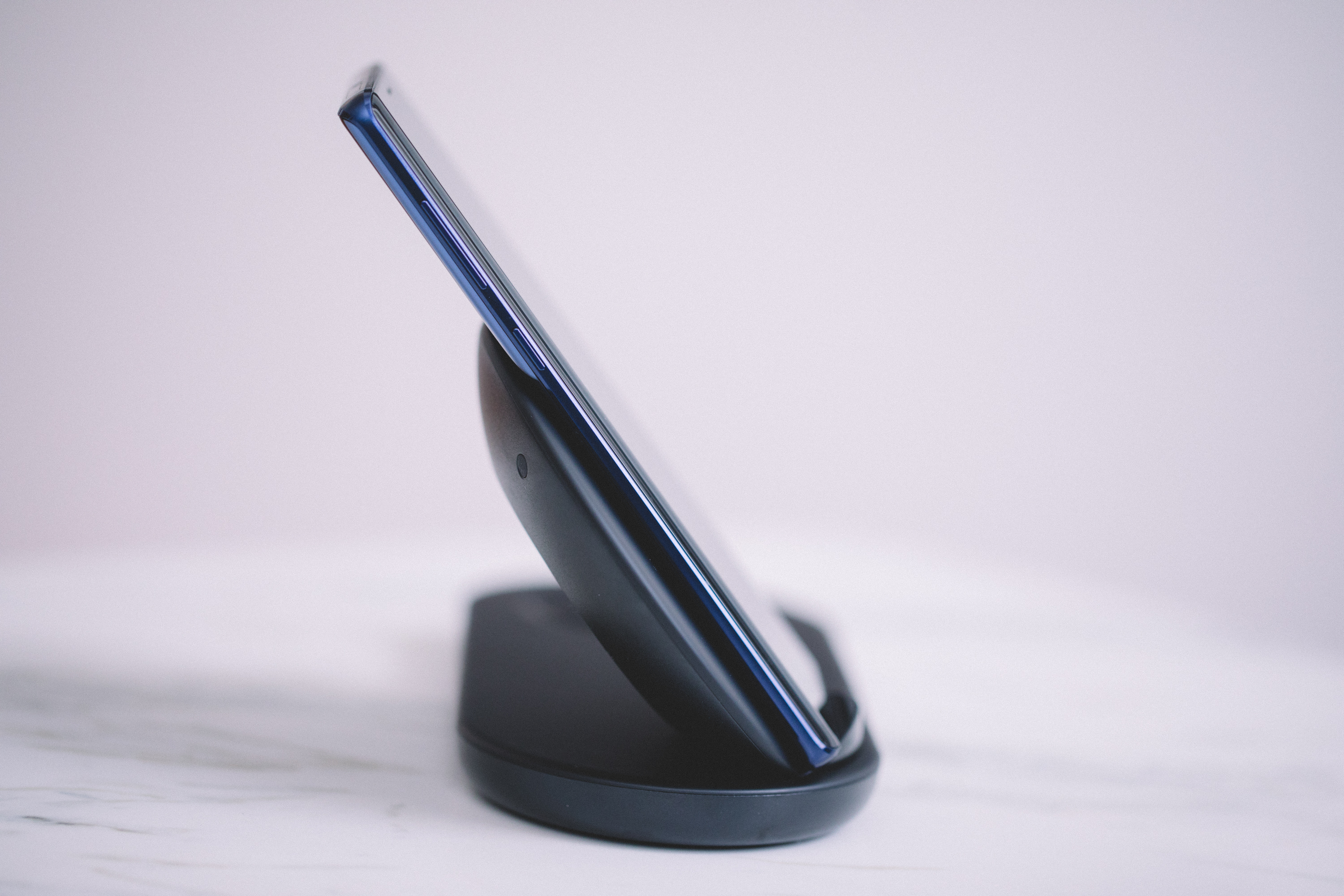
The company also, kindly, included the new Wireless Charging Duo. The charging pad is not quite as ambitious as the AirPower, but unlike that product, introduced nearly a year ago by Apple, I have this in my hands right now. So, point: Samsung. Charging the device from zero to 100 percent took three hours on the dot with the $120 “Fast Charge” pad. And it’s nice and toasty now.
Memories
Okay, about that price. Again, we’re talking $999.99 to start. There’s also a second SKU. That one will run you $1,295.99. Take a moment if you need to.
That’s a silly amount of money if you’re not the starting point guard for the Golden State Warriors. So much for the rumors that the company would be working to make its devices more economically accessible. And while the premium hardware has always meant that the Galaxy line is going to remain on the pricey side, I can’t help but point out that a few key decisions could have kept the price down, while maintaining build quality.
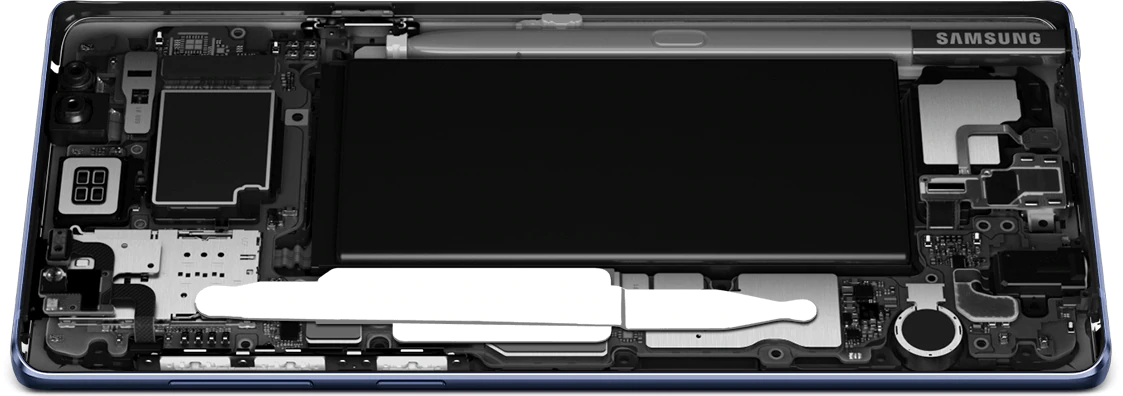
Storage is arguably the primary culprit. The aforementioned two SKUs give you either 6GB of RAM with 128GB or 8GB of RAM with 512GB. With cloud syncing and the rest, it’s hard to imagine I would come close to that limit in the two or so years until the time comes to upgrade my handset.
I’m sure those sorts of crazy media-hoarding power users do, in fact, exist in the world, but they’re undoubtedly a rarity. Besides, as Samsung helpfully pointed out, 512GB SD cards already exist in the world. Sure, that’s another $350 tacked onto the bottom line, but it’s there, if you need it. For most users, it’s hard to see Samsung’s claim of having “the world’s first 1TB-ready smartphone” (512GB+512GB) exists for little more reason than racking up yet another flashy claim for the 1960s Batman utility belt of smartphones.
Sure, Samsung no doubt gets a deal on Samsung-built hard drives, but the component has to be a key part in what’s driving costs up. For a company as driven by choice as Samsung, I’m honestly surprised we’re not getting more options up front here in the States.
Remote control
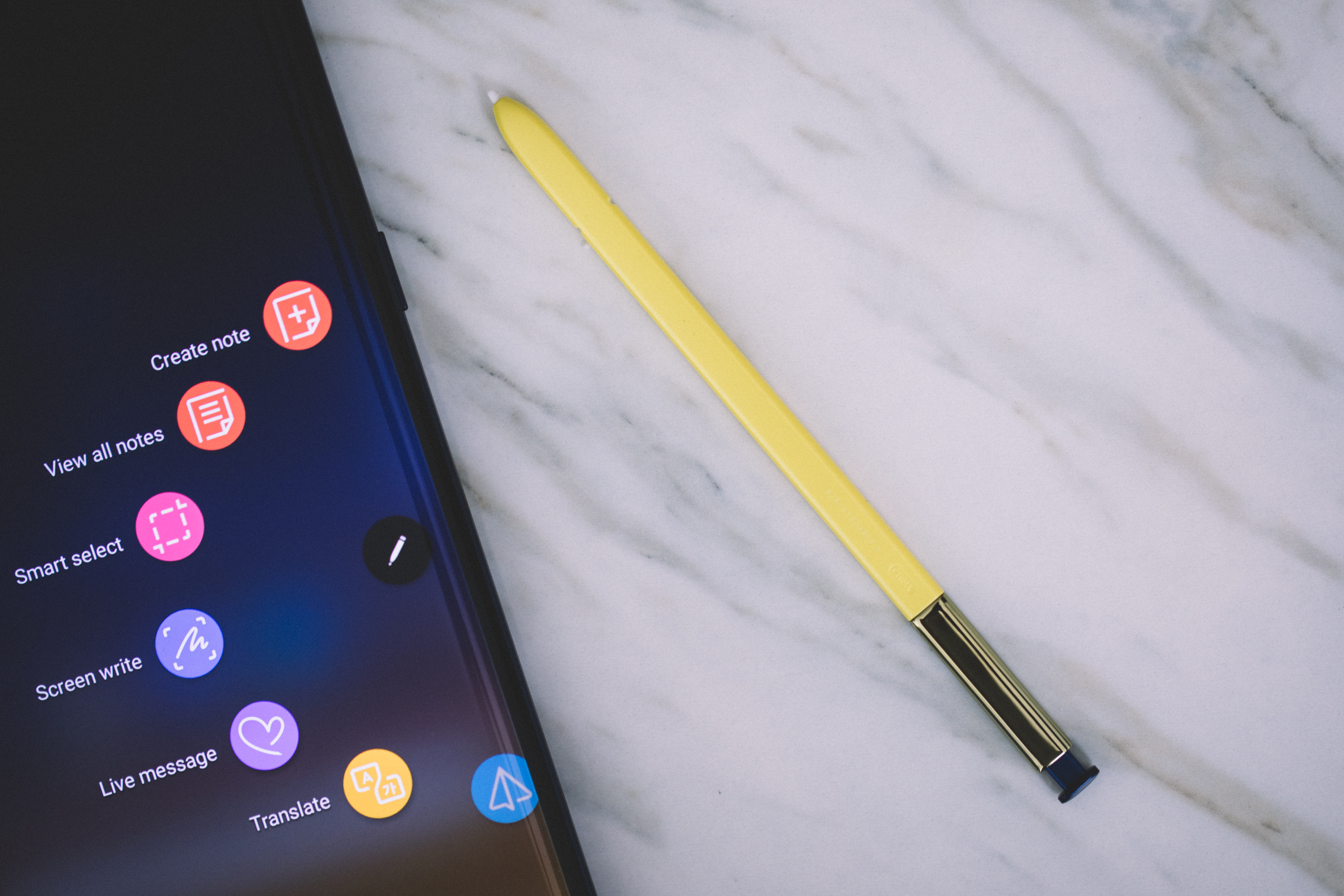
Confession: After testing many Galaxy Note models over the course of many years, I’ve never figured out a great use for the S-Pen. I mean, I’m happy that people like it, and obviously all of the early skepticism about the return of the stylus was quickly put to rest, as the company has continued to go back to the well, year after year.
But all of the handwritten note taking and animated GIF drawing just isn’t for me, man. I also recently spoke to an artist friend who told me that the Note doesn’t really cut it for him on the drawing front, either. Again, if you like or love it, more power to you, but it’s just not for me.
As silly as the idea of using the S-Pen as a remote control might appear at first glance, however, it’s clear to me that this is the first use of the built-in accessory I could honestly see using on a daily basis. It’s handy once you get beyond the silliness of holding a stylus in your hand while running, and serves as a handy surrogate for those who don’t own a compatible smartwatch.
The S-Pen now sports Bluetooth Low Energy, allowing it to control different aspects of phone use. Low Energy or not, that tech requires power, so the stylus now contains a super conductor, which charges it when slotted inside the phone; 40 seconds of charging should get you a healthy 30 minutes of use. Even so, the phone will bug you to remind you that you really ought to dock the thing when not in use.
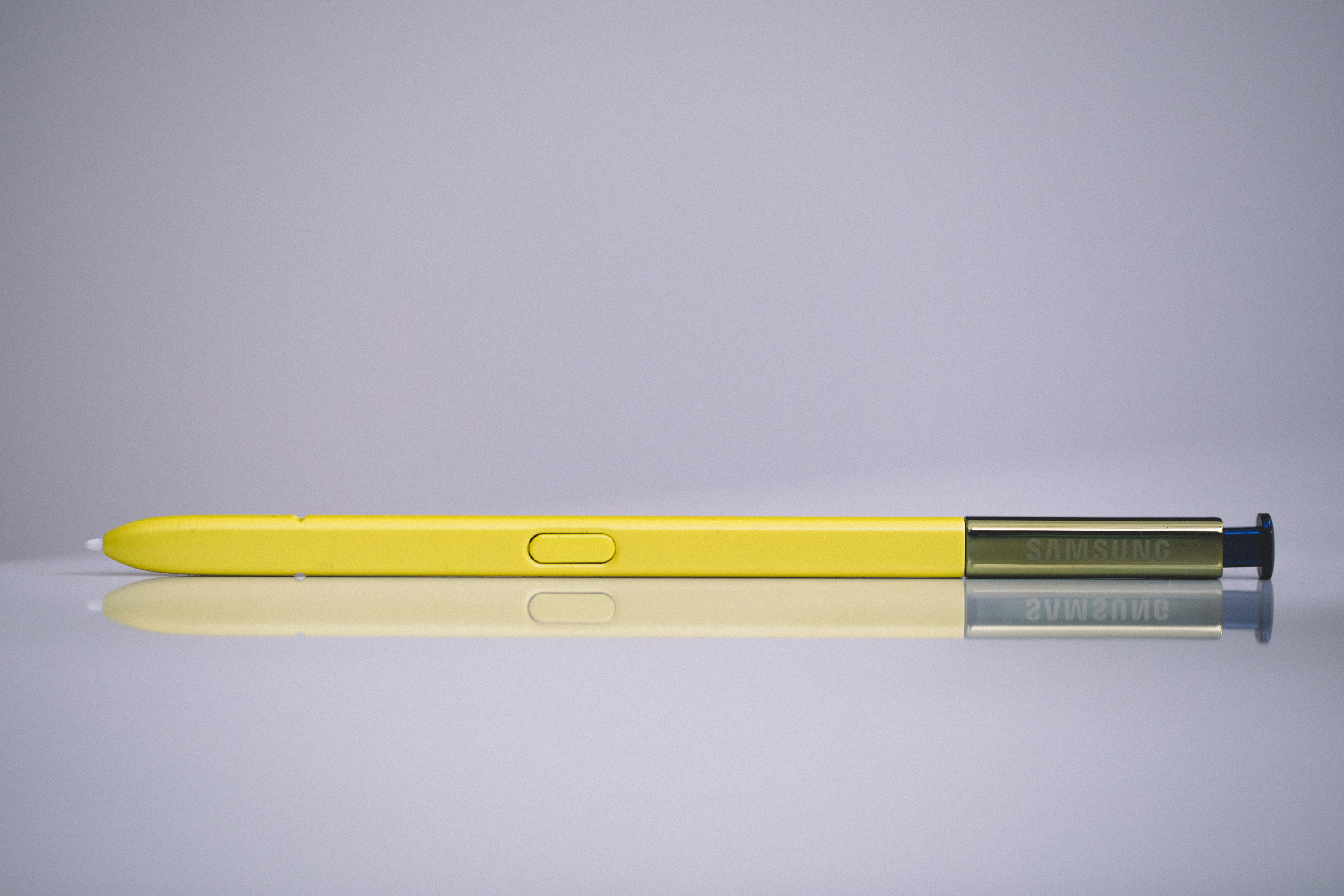
The compatible apps are still fairly limited at launch, but it’s enough to demonstrate how this could be a handy little addition. Of the bunch, I got the most out of music control for Spotify. One click plays/pauses a song, and a double-click extends the track. Sure, it’s limited functionality, but it saved me from having to fiddle with the phone to change songs went I went for my run this morning.
You’ll need to be a bit more creative when determining usefulness in some of the other apps. Using it as a shutter button in the camera app, for instance, could be a useful way to take a selfie without having to hold the phone at arms’ length.
The entire time, I wondered what one might be able to accomplish with additional buttons (volume/rewind/gameplay)? What about a pedometer to track steps when you’re running on the treadmill without it in the pocket? Or even a beacon to help absent-minded folks like myself find it after we invariably drop it between couch cushions.
But yeah, I understand why the company would choose to keep things simple for what remains a sort of secondary functionality. Or, heck, maybe the company just needs to hold some features for the Note 10 (Note X?).
Oh, and the Blue and Lavender versions of the phone come in striking yellow and purple S-Pens, with lock-screen ink color to match. So that’s pretty fun.
Hey man, nice shot

Nowhere is the Note’s cumulative evolution better represented than the camera. Each subsequent Galaxy S and Note release seem to offer new hardware and/or software upgrades, giving the company two distinct opportunities per year to improve imaging for the line. The S9, announced back in February, notably brought improved low-light photography to the line. The dual aperture flips between f/1.5 and f/2.4, to let in more light.
It’s a neat trick for a smartphone. Behold, a head to head between the Note 9 (left) and iPhone X (right):

Here’s what we’re dealing with on the hardware front:
- Rear: Dual Camera with Dual OIS (Optical Image Stabilization)
- Wide-angle: Super Speed Dual Pixel 12MP AF, F1.5/F2.4, OIS
- Telephoto: 12MP AF, F2.4, OIS
- 2X optical zoom, up to 10X digital zoom
- Front: 8MP AF, F1.7
This time out, the improvements are mostly on the software side of things. Two features in particular stand out: Scene Optimizer and Flaw Detection. The first should prove familiar to those who’ve been paying attention to the smartphone game of late. LG is probably the most prominent example.
Camera hardware is pretty great across the board of most modern smartphone flagships. As such, these new features are designed to eliminate the current weakest link: human error. Scene Optimizer saves amateur photographers from having to futz with more advanced settings like white balance and saturation.
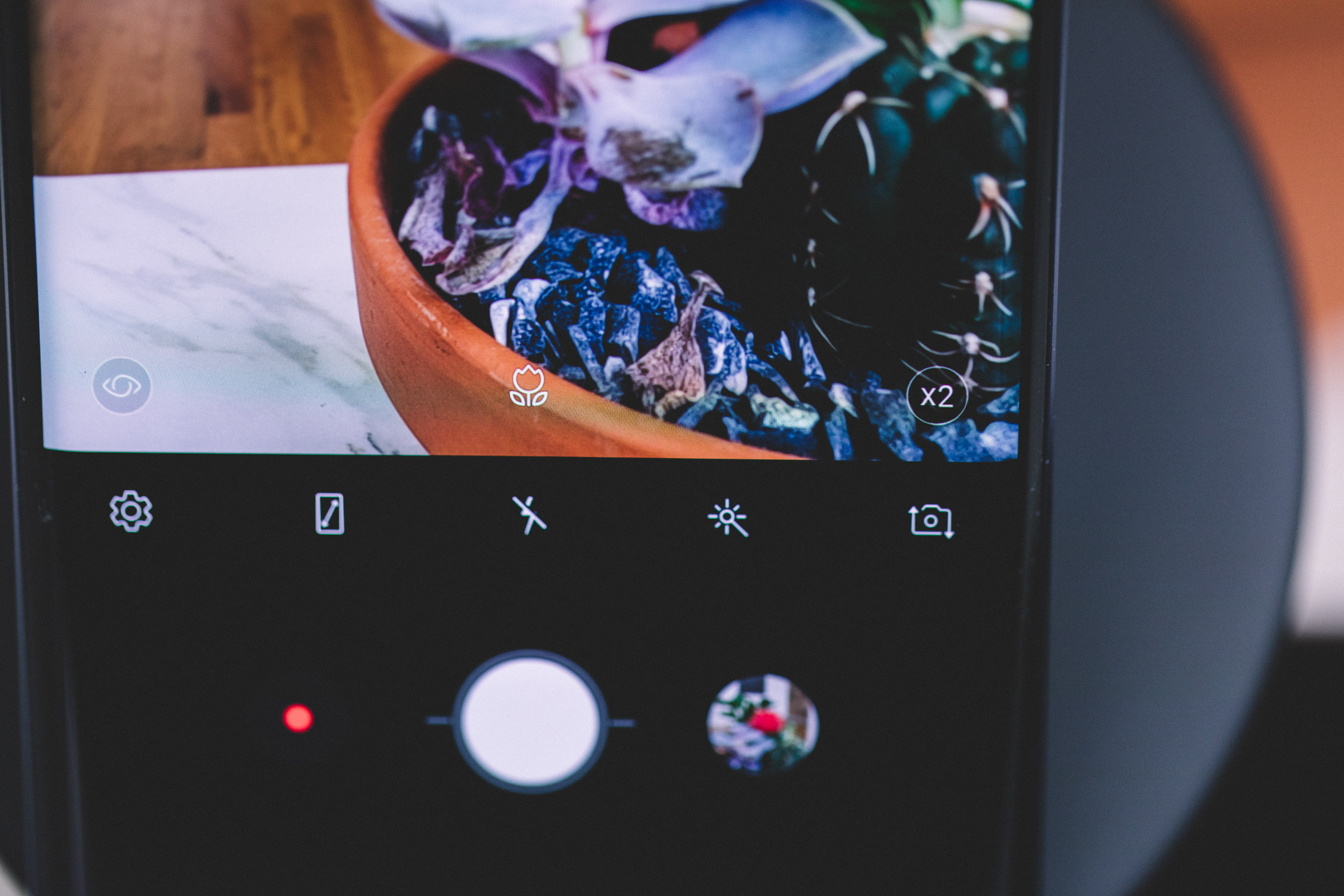
The feature uses AI to determine what the camera is seeing, and adjusts settings accordingly. There are 20 different settings, including: Food, Portraits, Flowers, Indoor scenes, Animals, Landscapes, Greenery, Trees, Sky, Mountains, Beaches, Sunrises and sunsets, Watersides, Street scenes, Night scenes, Waterfalls, Snow, Birds, Backlit and Text.
Some are pretty general, others are weirdly specific, but it’s a good mix, and I suspect Samsung will continue to add to it through OTA updates. That said, the function itself doesn’t need a cloud connection, doing all of the processing on-board. The feature worked well with most of the flowers and food I threw at it (so to speak), popping up a small icon in the bottom of the screen to let me know that it knows what it’s looking at. It also did well with book text.
The success rate of other things, like trees, were, unsurprisingly, dependent on context. Get just the top part and it identifies it as “Greenery.” Flip the phone to portrait mode and get the whole of the trunk and it pops up the “Tree” icon. I did get a few false positives along the way; the Note 9 thought my fingers were food, which is deeply disturbing for any number of reasons.

[Without Scene Optimizer – left, With Scene Optimizer – right]
Obviously, it’s not going to be perfect. I found, in the case of flowers that it has the tendency to oversaturate the colors. If you agree, you can disable the feature in settings. However, you have to do this before the shot is taken. There’s no way to manually override the feature to tell it what kind of object you’re shooting. That seems like a bit of a no-brainer addition.
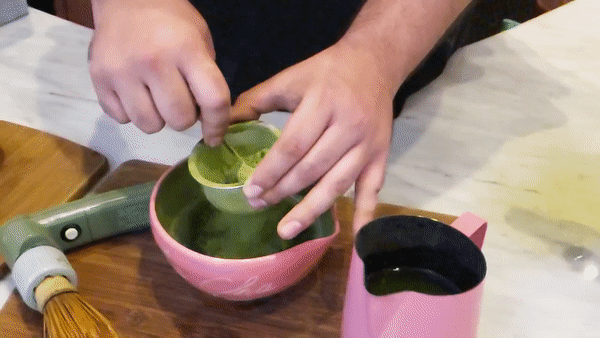
[Super slow-mo matcha under the flicking lights]
Flaw Detection serves a similar role as Scene Optimizer, helping you avoid getting in your own way as an amateur photog. The feature is designed to alert you if a shot is blurry, if there’s a smudge on the screen, if the subject blinked or if backlighting is making everything look crappy. In the case of lens smudging and backlighting, it only bothers with a single alert every 24 hours.
The blink detection worked well. Blur detection, on the other hand, was a bit more of a crap shoot for subjects in motion and those that were too close to the lens to get a good focus. The feature could use a bit of work, but I still think it’s one of the more compelling additions on the whole of the device and anticipate a lot of other companies introducing their own versions in the coming year.
[gallery ids="1689899,1689901,1689903,1689904,1689932"]Design Note
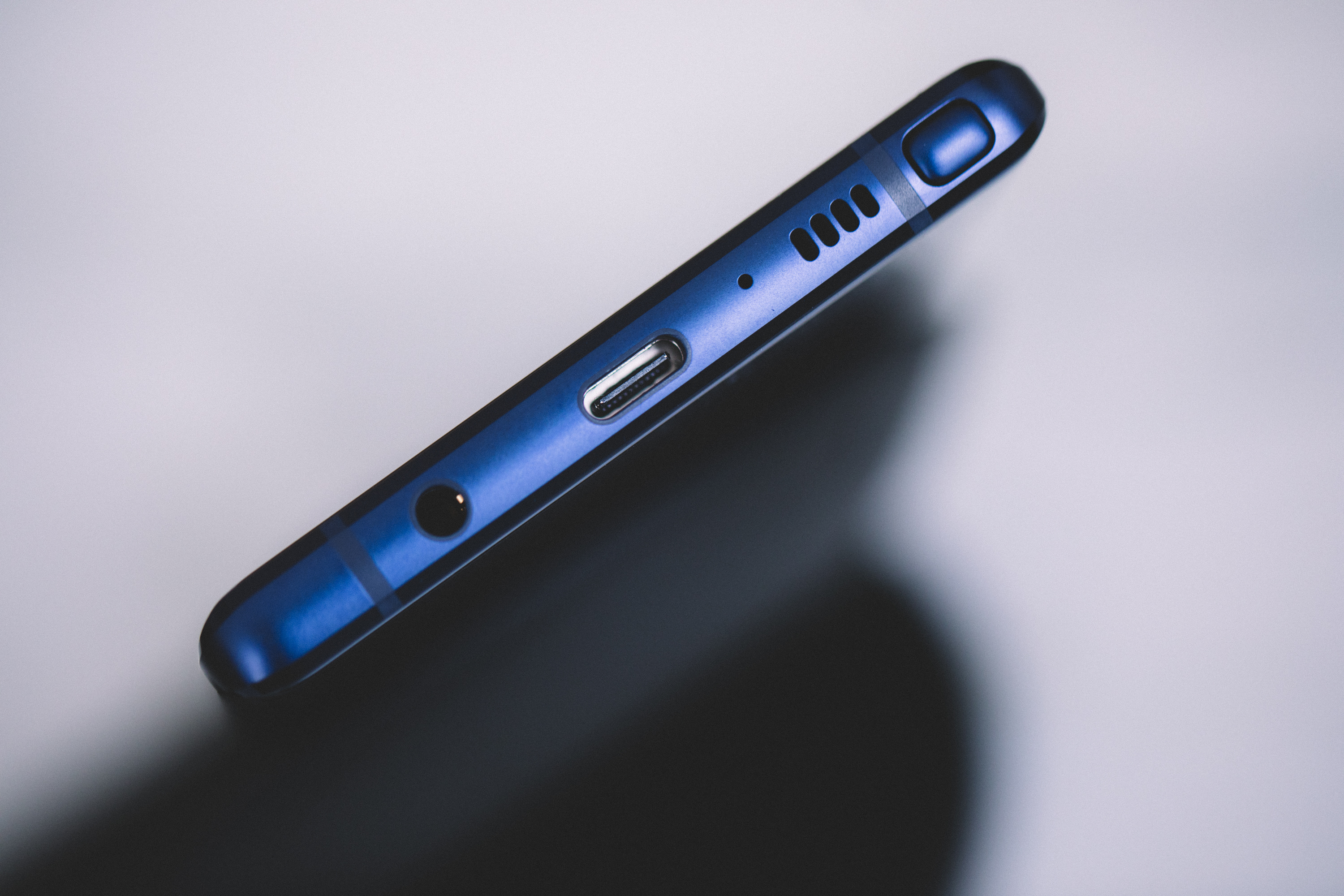
The more the Note changes, the more it stays the same, I suppose. As expected, the design language hasn’t changed much, which is no doubt part of what made Samsung CEO DJ Koh think he could get away with using the device in public ahead of launch. The footprint is virtually the same in spite of the ever-so-slightly larger screen (6.3 > 6.4-inches, same 2,960 x 1,440 resolution) — from 162.5 x 74.8 x 8.6 mm on the 8, to 161.9 x 76.4 x 8.8 mm on the 9.
That’s perfectly fine. Samsung’s done an impressive job cramming a lot of screen into a manageable footprint over the past several gens. The only major change (aside from the lovely new blue and purple paint jobs) is the migration of the fingerprint sensor from the side of the camera to underneath it.
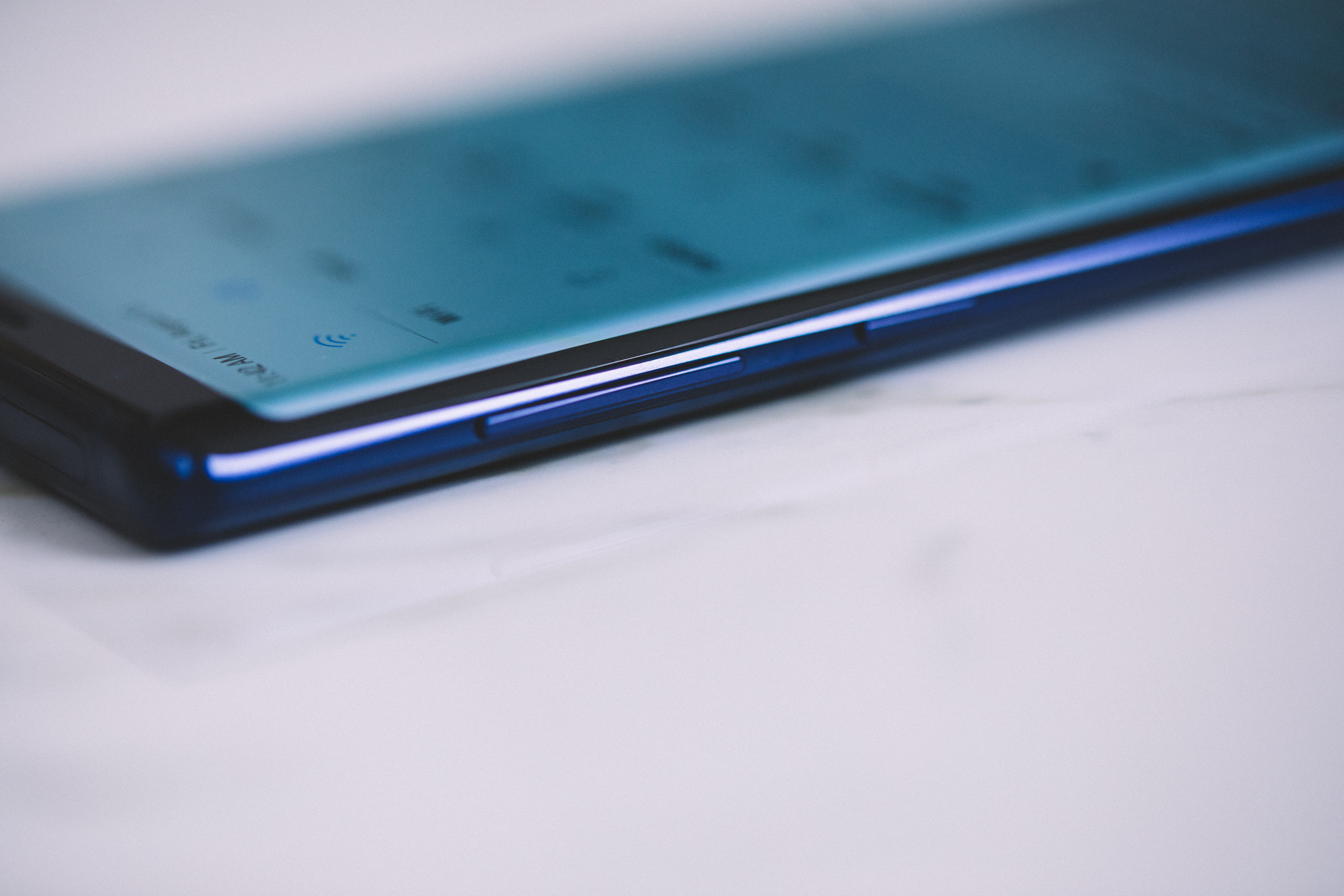
This was a clear instance of Samsung responding to feedback from users frustrated by all the times they mistook the camera for the fingerprint reader. The new placement helps a bit, though it’s still fairly close to the camera, and the fact that both are similar shapes doesn’t help matters. Thank goodness for that new smudge detector.
Oh, and the headphone jack is still present, because of course it is. For Samsung, it’s an important way to distinguish the product and approach from a world gone dongle mad.
Note on Notes
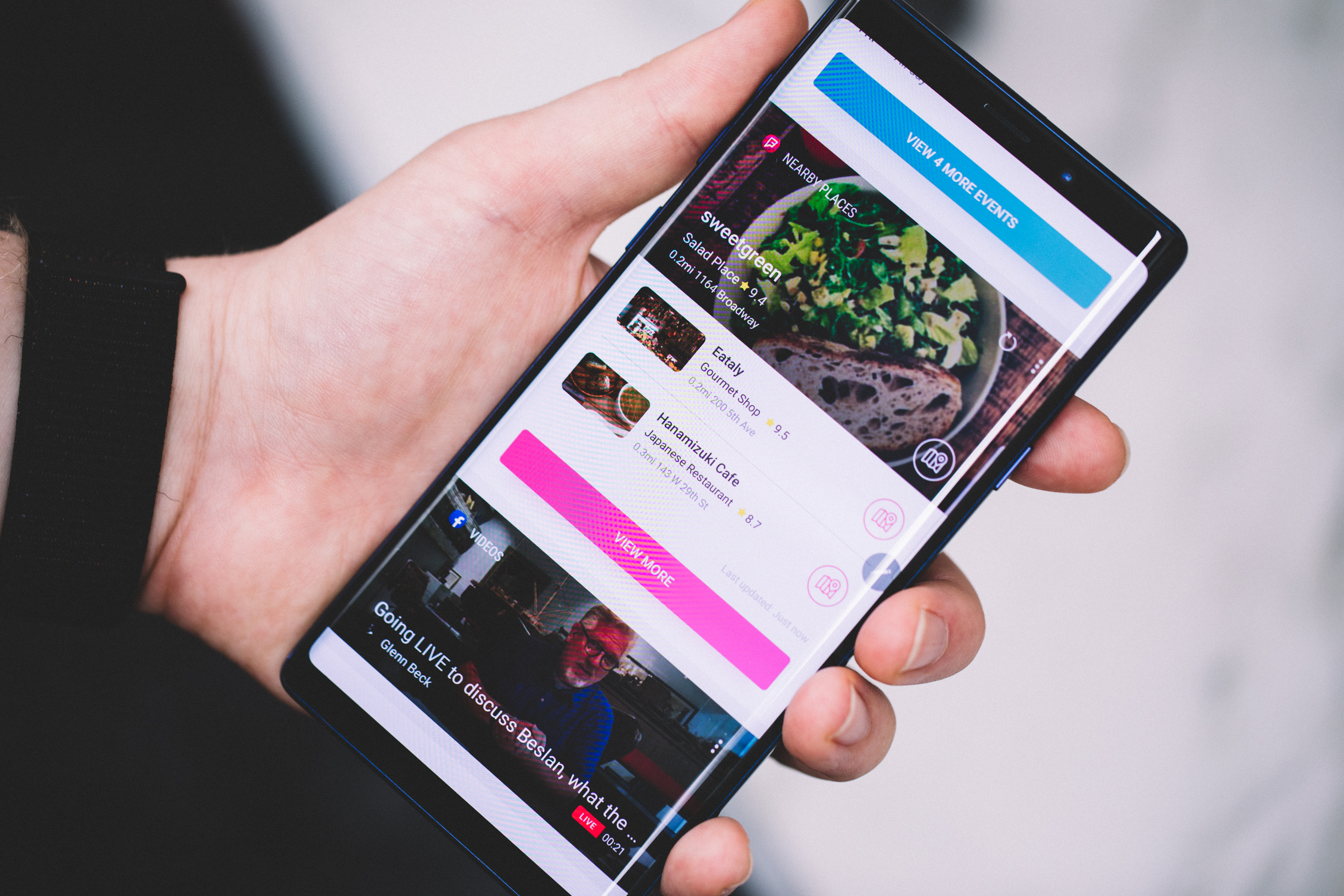
Oh Bixby, you eternal bastion of unfulfilled potential. A full rundown of new features can be found here. Overall, the smart assistant promises to be more conversational, with better concierge features. That said, Samsung’s once again tweaking it until the last moment, so I can’t offer you a full review until closer to the phone’s August 24 street date.
So stay tuned for that, I guess. I will say that the setup process can be a bit of a slog for a feature designed to make everything easier. Playing with Bixby voice required me to navigate several pages in order to connect the two. Thankfully, you should only have to deal with that the one time.
Samsung’s continuing to tweak the internals to make its device more suitable for gaming. The water-carbon cooling system tweaks the liquid cooling system found on the device since the S7, to help diffuse heat more efficiently. The large, bright screen meanwhile, is well-suited to mobile gaming, and the 6GB model handled Fortnite fairly well.
A final note

The next smartphone revolution always seems to be a year away. The potential arrival of a Samsung device with a foldable display makes the notion of carrying a massive device around in one’s pocket almost quaint. For the time being, however, the Note remains one of the best methods for transporting a whole lot of screen around on your person.
A lot has changed about the Note in the past seven years, but the core of the device is mostly the same: big screen and stylus coming together to walk the line between productivity and entertainment. It’s big, it’s bold, it’s too expensive for a lot of us. But it remains the phablet to beat.













0 comments
Post a Comment